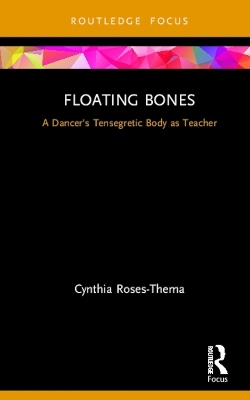
Floating Bones
A Dancer's Tensegretic Body as Teacher
Seiten
2020
Routledge (Verlag)
978-0-367-46950-4 (ISBN)
Routledge (Verlag)
978-0-367-46950-4 (ISBN)
Floating Bones charts the author’s journey into tensegrity that begins in ballet and culminates in a model for addressing one’s body as a teacher. This book will be of great interest to students, scholars and practitioners of dance, theatre and sociology.
Floating Bones charts the author’s journey into tensegrity, which begins in ballet and culminates in a model for addressing one’s body as a teacher.
Tensegrity flips traditional biomechanical models such that instead of support coming from the bones, the bones float, and it is the muscles and other soft connective tissue that provide support for the moving body. Using the model of tensegretic experience, Roses-Thema connects somatics, cognition, rhetoric, and reflective practices detailing the means that constructed approaching the body as a teacher. This study presents the argument for extending the models of thinking to include bodily thinking, by citing how the experiential perspective of tensegrity constructs physical evidence of the rhetorical concept, metis, where the body thinks as it moves.
This book will be of great interest to students, scholars, and practitioners of dance, theater, and sociology.
Floating Bones charts the author’s journey into tensegrity, which begins in ballet and culminates in a model for addressing one’s body as a teacher.
Tensegrity flips traditional biomechanical models such that instead of support coming from the bones, the bones float, and it is the muscles and other soft connective tissue that provide support for the moving body. Using the model of tensegretic experience, Roses-Thema connects somatics, cognition, rhetoric, and reflective practices detailing the means that constructed approaching the body as a teacher. This study presents the argument for extending the models of thinking to include bodily thinking, by citing how the experiential perspective of tensegrity constructs physical evidence of the rhetorical concept, metis, where the body thinks as it moves.
This book will be of great interest to students, scholars, and practitioners of dance, theater, and sociology.
Cynthia Roses-Thema is a Principal Lecturer in the School of Film, Dance and Theatre at Arizona State University, USA.
Part I Floating Bones Overview 1. How I Bumped into my Floating Bones 2. Questioning 3. The Big + 4. Valuing Weight 5. Quantum Awareness 6. Catching Breath 7. A Budding Philosophy Built out of Floating Bones Part II Thinking as Overview 8. Rodin is Only Half the Process 9. Metis Unleashed 10. Metis at Depth Part III Configuring the Dancer’s Tensegretic Body as Teacher Overview 11. The Shape of Listening 12. Changing Strength and Flexibility 13. Configuring the Dancer’s Tensegretic Body as Teacher
| Erscheinungsdatum | 15.01.2021 |
|---|---|
| Zusatzinfo | 8 Halftones, black and white; 8 Illustrations, black and white |
| Verlagsort | London |
| Sprache | englisch |
| Maße | 138 x 216 mm |
| Gewicht | 258 g |
| Themenwelt | Kunst / Musik / Theater ► Theater / Ballett |
| Sachbuch/Ratgeber ► Sport ► Tanzen / Tanzsport | |
| Geisteswissenschaften ► Psychologie ► Allgemeine Psychologie | |
| ISBN-10 | 0-367-46950-2 / 0367469502 |
| ISBN-13 | 978-0-367-46950-4 / 9780367469504 |
| Zustand | Neuware |
| Informationen gemäß Produktsicherheitsverordnung (GPSR) | |
| Haben Sie eine Frage zum Produkt? |
Mehr entdecken
aus dem Bereich
aus dem Bereich


